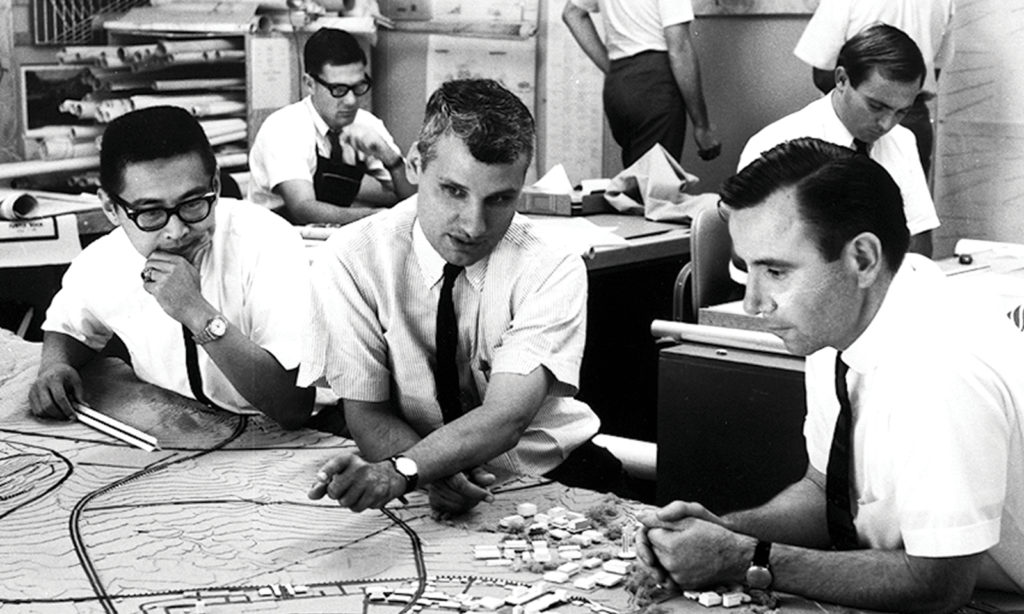Looking Back: The Story of the Irvine Master Plan
In 2021, the City of Irvine celebrated its 50th anniversary. In just a half-century, the city has become America’s safest city and a leader in sustainable planning, with 277 parks and more than 500,000 trees. But its story, as a planned city, began more than a decade before residents would officially form the all-new city of Irvine.
Urban sprawl was hurtling toward Orange County in the 1950s. Landowners were under immense pressure to sell property to make way for piecemeal development occurring in cities throughout Los Angeles county. But Irvine Company had a bold plan. It would forgo short-term economic gain to maintain ownership of The Irvine Ranch and develop a Master Plan for a new city built around a new university — UC Irvine.
The “architect” of the Master Plan was renowned planner William Pereira. In 1957, the University of California had hired him to scout cities for its next campus, which he would design.
Pereira identified more than a dozen cities, but his favorite spot for a new campus wasn’t a city at all. It was The Irvine Ranch.

It shared all the qualities of great universities in France, Italy and ancient Greece that he’d studied: a contemplative setting, a sense of place, and adequate land to grow.
Pereira took his recommendation to the University of California regents.
“With meticulous eloquence, Pereira made his dream come alive,” according to the late Ray Watson, an Irvine Company president who worked closely with Pereira.
Irvine Company donated 1,000 acres for the UC Irvine campus and asked Pereira to design the new City of Irvine around the university as a “city of intellect.”
Together, Pereira and Irvine Company created the Irvine Master Plan as a collection of villages that emanated from the university, with villages centered around local schools.
In 1963, a Time magazine cover story praised Pereira and Irvine Company for using “ecological and sociological foresight” to create an entirely new city — a place where both people and nature can thrive.